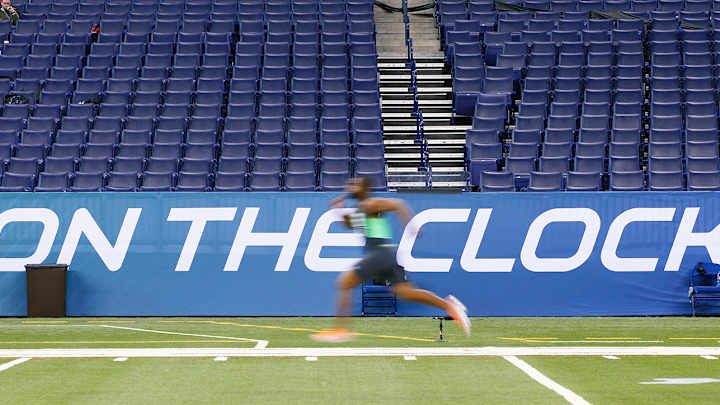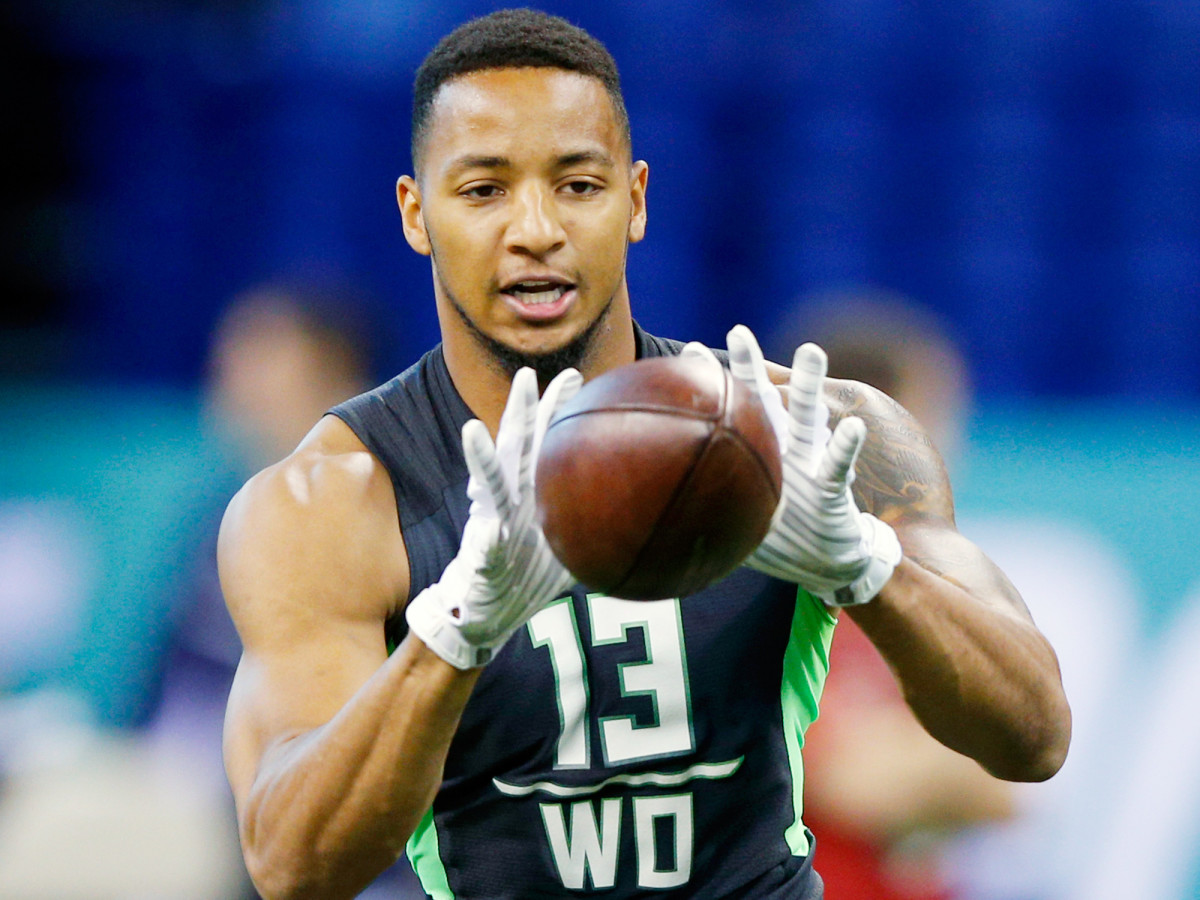Does the Big 12 have an NFL combine problem?

As the NFL combine gets underway Wednesday in Indianapolis, one of the top storylines in the college football world is the shortage of Big 12 players in attendance. Just 19 players from the conference earned invites to this year’s combine, far fewer than the other Power 5 conferences: 66 from the SEC, 60 from the ACC, 51 from the Big Ten and 46 from the Pac-12.
As SI’s Andy Staples noted last week, this discrepancy is not resolved by factoring in the number of teams in each conference nor is it a one-year outlier. Since 2014, the Big 12 has sent the fewest players to the combine each year among the Power 5 conferences.
The Big 12 is known for its distinctive style of football, with nearly every team in the conference running some form of up-tempo spread offense that differs from the type of attacks most commonly run in the NFL. So should the Big 12 be concerned that NFL teams are less interested in its players? Or should it not worry about a few seasons of NFL combine data?
Colin Becht: The Big 12 should be concerned (but not panicked)
On its surface, this doesn’t feel like a big problem. As long as their teams are winning games and competing for championships, why should college football fans care too much about NFL teams’ assessments? The answer is because it takes superior talent to win games and compete for championships, and the superior talent cares about NFL teams’ assessments. And the evidence is beginning to build that perhaps the next wave of superior talent is taking notice of the state of the Big 12.
The bulk of the conference’s top recruits has always come from the state of Texas. Yet among the top 11 recruits from the Lone Star State in the class of 2017, according to Scout.com, just two chose Big 12 schools (Oklahoma’s Robert Barnes and Texas Tech’s Jack Anderson). That represents a noticeable drop from last year, when four of the state’s top 10 prospects stayed in the Big 12, or 2015, when five of the top 13 chose Big 12 programs. The Big 12 has always faced plenty of competition for the top Texas prospects, but more and more of those prospects are starting to get away.
What will the future college football conference landscape look like? #DearAndy
The effect is clear in the overall class rankings, where Oklahoma was the only Big 12 program to finish in the top 27. Texas’s on-field struggles and coaching change make the Longhorns’ lackluster ranking a bit of an anomaly, but the conference-wide message is indisputable. The average star rating for the Big 12’s recruits was the lowest among the Power 5 conferences.
Of course, one year is too small of a sample size to declare an emergency (though it’s worth noting that among the class of 2018 the only prospect in the top 10 Texas recruits to have announced a commitment picked LSU, and the average star rating of the Big 12’s commitments ranks last in the Power 5 again). So hold off on any grand pronouncements that the Big 12 is in a tailspin that will lead to an inevitable demise. Still, the numbers right now are alarming, and the conference would be wise to take notice.

Gabriel Baumgaertner: The Big 12’s problems will fix themselves
This isn’t a huge deal. The Big 12 is still going to attract most of the best recruits from Texas, even if Urban Meyer and Nick Saban will hop in and poach some of the best players every year. The Big 12’s credibility has suffered because of its ham-fisted expansion negotiations and poor defense, but if Tom Herman can turn Texas around by 2018 (he already has the talent to do so), then you’ll see an uptick in combine participants and the conference’s reputation will return to its prior state.
As long as Herman, Bob Stoops, Mike Gundy and Gary Patterson remain in the conference, the Big 12 will have marketable NFL talent. It’s in a significant lull right now, but the bottom half of the conference was rarely churning out loads of NFL talent before this dry spell. It’s an embarrassing moment for the conference, but not one that signals a major decline.
Chris Johnson: The Big 12 isn’t producing enough talent
The number of Big 12 players invited to the combine is not, in itself, a problem, but it's a manifestation of the very real problem the conference is having attracting and developing elite talent. Quite simply, the Big 12 is not recruiting as many bluechip prospects as the other Power 5 conferences, and it’s not grooming as many of the prospects it does bring in into players whom NFL teams covet.
The root of the issue is the Big 12’s lack of success on the field. 2016 marked the second time in the College Football Playoff’s three years of existence that the conference didn’t send a team to the national semifinals, and only one of the conference’s squads finished in the top 10 of the final playoff rankings (Oklahoma at No. 7). The dearth of teams contending for final four spots diverts attention away from the Big 12 during league play and heightens the sense that there’s more on the line every Saturday for the rest of the Power 5.
The unlikely rebuild: With Texas behind on and off the field, Tom Herman's overhaul begins
The less exposure the Big 12 gets, the less attractive it becomes to high-end prospects, most of whom want to play in marquee games with massive national audiences. This year, for example, the Big 12 placed only one program (the Sooners at No. 6) in the top 25 of Scout.com’s team recruiting rankings. The SEC had six in the top 11. Recruiting rankings have blind spots, but for the most part, they’re effective at sorting the nation’s best high school players according to ability and upside.
Other factors, like the SEC’s consistent raiding of the state of Texas for four- and five-stars and the University of Texas’s post-Mack Brown dip into mediocrity, have contributed to the Big 12 talent drain. So getting to the playoff and winning a few more games every year, while a reasonable goal, won’t cure all of what ails the conference. But an improved on-field product would go a long way toward helping the Big 12 both lure more talent and send more of it to the pros.
